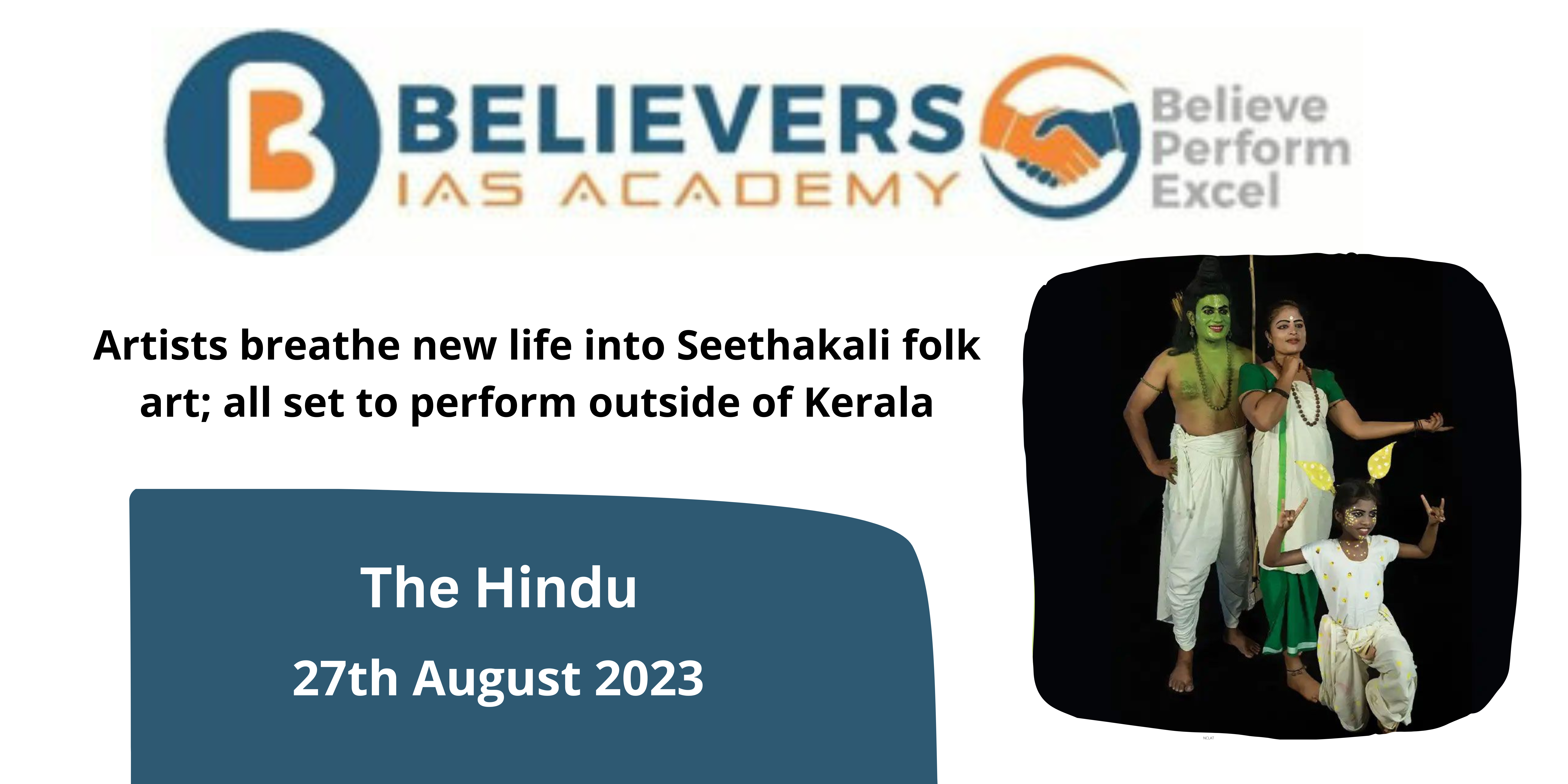Artists breathe new life into Seethakali folk art; all set to perform outside of Kerala
Context :
Long ago, beginning with Atham, the festival days of old Desinganad used to reverberate with the rhythm of Seethakali. It is a dance drama that features Dalit performers largely from the Veda and Pulaya communities and shows tiny episodes of the Ramayana in each farmhouse.
Origin and Background:
- Seethakali is a centuries-old traditional art style that originated in Perinad in the Kollam region of Kerala, India.
- It was first done by the Vedar and Pulayar populations about 150 years ago.
Depiction of Ramayana:
- The Ramayana, an Indian epic, served as the inspiration for Seethakali.
- Through performances, mythical figures like Rama, Seetha, Ravana, and Hanuman come to life.
- The work of art describes Seetha’s journey, from going into the woods with Rama to reaching the heavens.
Performance Occasions:
- Traditionally, this performance took place during the Onam harvest celebration.
- From Atham Star (the first day of Onam) through the 28th day after Onam, performances take place.
- From house to house, performers from the Vedar and Pulayar communities showcase their art.
Natural Materials:
- The props and instruments were made of bamboo and palm leaves, which are examples of natural materials.
- reflects the tight ties between the creative form and the natural world.
Makeup and Costumes:
- Makeup and costumes are colourful and captivating.
- Green is a colour used to represent gods and goddesses in Keralan art, and it is used to represent figures like Rama and Laxmana.
Dynamic Elements:
- Rhythmic movements and dynamic music define performances.
- The energetic atmosphere is enhanced by the usage of traditional instruments.
Folk music and oral tradition:
- Performances are accompanied by folk music.
- The lyrics to these songs have been handed down orally for many generations.
Registered Group and Revival :
- There is now only one officially recognized Seethakali performing ensemble, “Perinad Seethakali Sangham.”
- in October 2018 became a member of the Kerala Folklore Akademi.
- The Akademi’s participation was crucial in reviving this dying art form.
Cultural Relevance:
- Kerala’s creative heritage is rediscovery through seethakali performances.
- demonstrates to the world the state’s cultural riches.
Who are Pulayar Communities?
An important caste group largely found in the southern region of India is the Pulayar community, also known as Pulaya, Pulayas, Cherumar, Cheramar, and Cheraman. They hold prominence in Tamil Nadu, Kerala, and Karnataka today.
Characteristics:
Caste and Distribution:
- The Pulayar caste is a distinctive caste that is mostly found in southern India.
- They are regarded as one of the major social groupings in Tamil Nadu, Kerala, and Karnataka.
Skills and Traditions:
- The Pulayars are renowned for their contributions in a variety of fields.
- They are renowned for their skill in music, handicrafts, and particular dances with deep cultural roots.
Kōlam-thullal:
- Kōlam-thullal is a mask dance that is a component of the exorcism ceremonies of the Pulayar culture.
- In rituals intended to stave off bad spirits, this dance is performed while wearing masks.
Mudi-āttam:
- Another significant dance style performed by the Pulayar population is Mudi-āttam, sometimes referred to as the hair dance.
- Its relationship to customary customs is highlighted by the fact that its roots can be traced to fertility rites.
Conclusion
Seethakali, which originates from Perinad, Kerala, is essentially a centuries-old folk art style that vividly performs scenes from the Ramayana. With its vibrant music, age-old instruments, and folk songs, it is a fascinating cultural treasure, and the Perinad Seethakali Sangham’s resurrection of it with assistance from the Kerala Folklore Akademi will ensure its survival for future generations.




